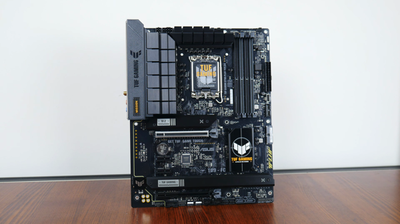
My experience with the ASUS TUF B760-PLUS WIFI ATX Motherboard (2024)
My thoughts on the ASUS TUF B760-PLUS WIFI: design durability performance connectivity and how it fares for gaming and builds.
Introduction
I recently got the chance to test the ASUS TUF GAMING B760-PLUS WIFI motherboard. The design looked solid and the feature set promising for a mid-tier gaming setup. Below I elaborate on design (quirks), performance and things like future-proofing.
Some photos (click to enlarge)
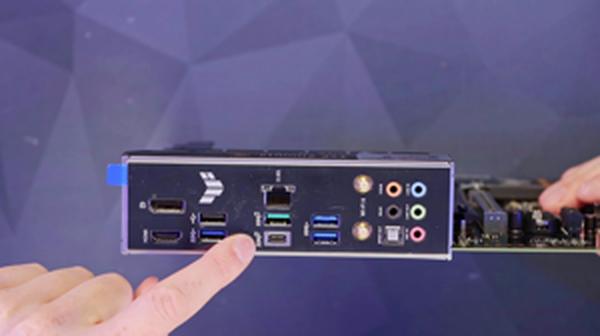
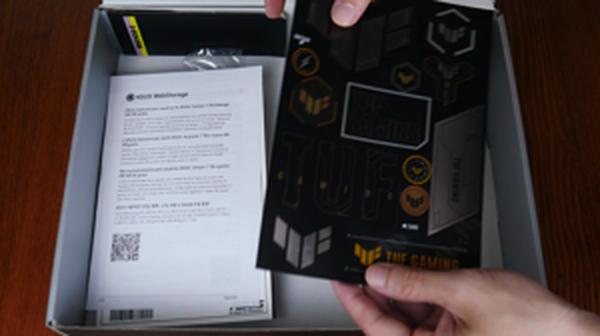
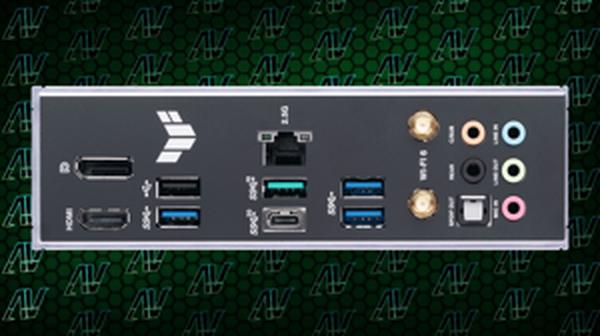
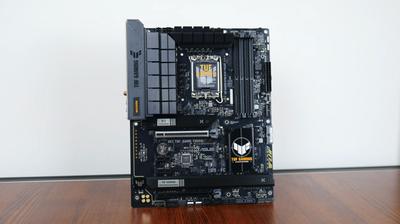
Specs of the ASUS TUF B760-PLUS WIFI ATX Motherboard
- Release Year
- Brand
- Chipset Type
- Compatible Devices
- Cpu Model
- Cpu Socket
- Memory Clock Speed
- Model Name
- Platform
- Ram Memory Technology
- Motherboards-compatible-processors
Prices
Design and Build Quality Impressions
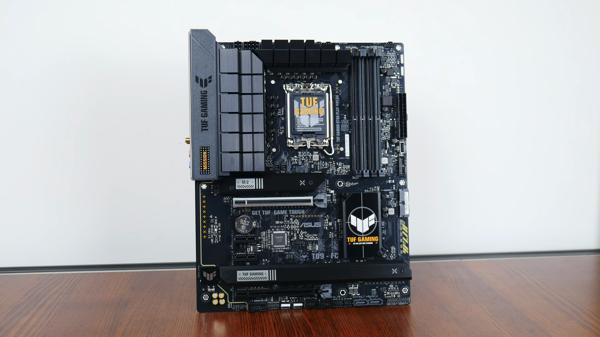
When I first got my hands on the ASUS TUF GAMING B760-PLUS WIFI motherboard, I paid special attention to its design and build quality. Here's a rundown of my impressions:
Aesthetic and Design: The new TUF Gaming logo and the geometric design give the board a sleek, modern look that's all about stability and reliability.
Build Quality: The military-grade components and the enlarged heatsinks are a testament to the ruggedness ASUS promises.
I've always appreciated the TUF lineup's commitment to durability, and this motherboard doesn't stray from that philosophy. The board feels sturdy in my hands, and visually, it hits the mark with the right balance of a robust and discreet style that would complement any gaming setup well.
Digging deeper past the initial looks, the enlarged VRM heatsinks did raise an eyebrow for me. While they contribute to effective cooling, their proximity to the processor socket was a bit unnerving, especially when I fitted the NZXT Kraken Z73. Users with larger coolers or hands might find the space a tad too snug for comfort.
Another highlight for me was the NVMe ports, designed with user-friendly clips. It's a small but appreciated detail that makes building that much smoother. No fumbling with tiny screws is always a bonus. Conversely, I did have a bit of a gripe with the PCIe slot's locking mechanism. It's a bit awkward to reach, something to possibly note for future iterations.
Now, the inclusion of 12+1 DrMOS power stages and a six-layer PCB speak volumes about the TUF's potential to handle high-powered components without breaking a sweat. It's these internal elements that you don't see at first glance that underscore the board's value proposition.
On top of that, the two-way AI Noise-Cancelation is a neat feature for those looking to do more than gaming, like streaming or video conferences, but let's save the nuanced performance discussion for another section.
I'll be frank, design and build have always been a deal-breaker for me, and I'm glad to report ASUS hasn't disappointed. Sure, there's always room for improvement (like the minor PCIe release issue), but overall, the TUF GAMING B760-PLUS WIFI meets the expectations set by its rugged branding. Just remember to double-check compatibility with your case and other components to prevent any surprises during the build process.
Performance and Stability Analysis

In the world of building PCs, stability and performance are the twin pillars upon which enthusiasts construct their dreams. Specifically, if you're interested in ASUS's approach to striking this balance, my use of the ASUS ROG Strix B760-F Gaming WiFi Motherboard delves into the strengths of another model within the same product family. From my own experience with the ASUS TUF GAMING B760-PLUS WIFI motherboard, I have to say, it threads the needle quite admirably between being robust and performance-driven.
Here's a snapshot of my insights:
Pros:
Solid stability with the latest 13th Gen Intel processors.
Military-grade durability with high-quality components.
PCIe 5.0 slot support is a huge plus for future graphics cards.
Comprehensive cooling solutions keep thermal performance in check.
Built-in WiFi 6 and 2.5Gb Ethernet ready for online gaming marathons.
BIOS updates promise compatibility with future 14th Gen chips.
Cons:
Heatsinks near the processor socket are a tight fit for some coolers.
The PCIe release latch placement could be more accessible.
I was especially impressed with the 12+1 DrMOS power stages and the enlarged VRM heatsinks which suggests that ASUS didn't skimp on the power delivery and heat dissipation. For marathon gaming sessions or heavy workloads, this is crucial. Moreover, having the Intel WiFi 6 and Realtek 2.5Gb Ethernet delivered a seamless online gaming experience, without any noticeable lags or disconnections.
Venturing into the realm of acoustics, the Two-way AI Noise-Cancellation is a neat feature for those who value clear communication, whether it's in intense gaming scenarios or during professional calls.
The ability to natively support the latest DDR5 RAM is certainly a pointer towards the future. While DDR5 might not be a game-changer yet, especially considering its price point, having that option is reassuring, especially since RAM prices have a tendency to drop over time.
However, not everything was perfect. For one, I found the placement of the heatsinks near the CPU socket a bit challenging. They didn't obstruct the installation of my NZXT Kraken Z73, but for those with larger cooling solutions or hands, it could be a tight squeeze. Additionally, while not a deal-breaker, the PCIe release catch could have been better positioned for easier access.
In essence, the TUF GAMING B760-PLUS WIFI proves to be a reliable motherboard with a forward-thinking blueprint. It might not have the flamboyance of higher-tier motherboards, but it solidly delivers where it counts for a mid-range build. Keep in mind the form factor; I learned the hard way that it won't fit every case, particularly when I had to return a motherboard due to incompatibility. Always double-check case and component compatibility to ensure a smooth building process.
In summary, as long as you're mindful of the space around the CPU socket and can live with the odd latch placement, the ASUS TUF GAMING B760-PLUS WIFI should serve your mid-range gaming or workstation needs very well indeed.
Connectivity and Future-Proofing

When assessing a motherboard for a build, especially one with the potential to remain relevant over a few upgrade cycles, the connectivity options and future-proofing features are crucial. The ASUS TUF GAMING B760-PLUS WIFI motherboard appears to hit these marks quite nicely.
For starters, the connectivity on this board is exemplary for its price point. It accommodates a variety of needs:
PCIe 5.0 slot for cutting-edge GPUs or fast storage in the future;
Dual PCIe 4.0 M.2 slots for high-speed NVMe SSDs, crucial for those massive game files and quick load times;
A generous serving of USB ports, including the rear USB 3.2 Gen 2x2 Type-C for ultrafast data transfer;
A front panel header supporting the latest USB standards as well as a Thunderbolt header.
On the wireless side, Intel WiFi 6 and Realtek 2.5Gb Ethernet present solid options for both wireless and wired networking needs. The Two-way AI Noise-Cancelation is a sweet addition too, ensuring clear communications, whether you're in a heated gaming session or a conference call.
But it's not just about the present; it's about longevity too. With support for both 12th and 13th Gen Intel processors and the promise of compatibility with future 14th Gen through BIOS updates, this board doesn't shy away from the long game. The DDR5 RAM support is another forward-looking feature, given that DDR5 is set to become the new standard in performance memory.
However, it's important to note some potential drawbacks. While the motherboard hosts some impressive features, there can be concerns about case compatibility — something I ran into myself. The board didn't quite fit my son's build initially, so make sure you double-check that before pulling the trigger.
I find it a bit regrettable too that the cost savings are perceptible in places like the smaller heatsinks and tighter spacing around the CPU socket, which can be a hassle for those with larger cooling solutions or hands. Also, while the service quality can vary depending on where you buy, it's a reminder to purchase from reputable sellers for the best support.
Overall, ASUS has crafted a motherboard in the TUF GAMING B760-PLUS WIFI that balances performance features and future-proofing with cost-saving measures. It's by no means perfect, but for someone looking to build a mid-range PC with the ability to stay relevant, it's a compelling option.
Aftermarket Support and Final Thoughts

When you're building a rig, aftermarket support is a deciding factor - you want a board that goes the distance, and the ASUS TUF GAMING B760-PLUS WIFI has left a solid impression, touching on key facets gamers and builders consider when they assemble their systems. Here's the rundown:
BIOS updates guarantee future compatibility; hearing whispers of readiness for Intel's 14th gen CPUs makes it a worthwhile investment.
Although it lacks some bells and whistles of pricier options, it's got enough going on to make it a strong contender for mid-range builds.
Customer service can be hit or miss; shopping around for the best vendor might pay off in case you run into hiccups.
I ran the latest i9-13900k on this board, and it didn't break a sweat even with a nudge on the clocks—kudos for stability, although the proximity of the heatsinks to the processor socket cramped my style a bit. Those with large hands, take note.
Having a board that doesn't play nice with your case is a pain. It's a misstep I've encountered, and while the ASUS TUF B760-PLUS WIFI is full of promise with PCIe 5.0 and DDR5 support, be sure to cross-check dimensions before you hit 'buy'.
Despite not having enough room to flex on the aesthetics or play up the premium features as other sections of the article likely have, the board’s straightforward nature is something I respect. Goes to show that a killer system doesn't always have to be about the flash.
On the networking front, between the onboard Intel WiFi 6 and the 2.5Gb Ethernet, my lag was virtually non-existent. Competing in online matches demands that level of reliability.
Two-way AI Noise-Cancelation was honestly more useful than expected—streamlined comms without background racket is a game-changer for both gaming and remote work sessions.
Overall, the board is a steady Eddie—robust enough to shrug off marathon gaming sessions, while its military-grade components lead you to think this might just outlast the zombie apocalypse. Yet, for all its strengths, the points of contention, like case compatibility and customer service, are a gentle reminder that even the most solid motherboard might not be a ‘one size fits all’ solution.
In the end, as I round out this review, it stands that the ASUS TUF GAMING B760-PLUS WIFI is an ally on the battlefield, real or virtual. It’s got the guts for high-octane performance and the glory of ASUS's TUF name behind it—providing you mind the quirks and clear the compatibility checkpoints.
Comments (1)
Share
"especially since RAM prices have a tendency to drop over time." Kind of hard to trust the opinion of a guy who missed the mark.